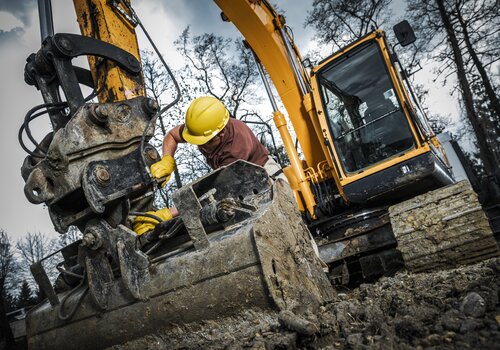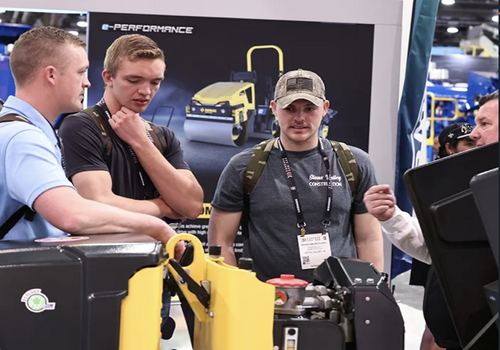In an era where the spotlight often falls on four-year college degrees, there is a renewed emphasis on high school training programs that prepare students for careers in the skilled trades. With construction and manufacturing facing critical labor shortages, these programs offer a practical and rewarding alternative to traditional academic paths. High school vocational training programs, often known as Career and Technical Education (CTE) programs, are bridging the gap between education and employment by equipping students with the skills they need to enter the workforce directly after graduation.
THE GROWING DEMAND FOR SKILLED TRADES
Employment in construction and extraction occupations is expected to grow faster than average from 2023 to 2033, with about 663,500 job openings each year due to growth and worker replacement.
However, industry experts predict that many of these roles will remain unfilled due to a lack of qualified workers. This shortage can be attributed to a combination of an aging workforce and a lack of younger people entering the trades. High school training programs that introduce students to these industries at an earlier stage are a vital part of addressing this workforce gap.
In a survey conducted by Associated General Contractors of America (AGC), 94% of construction firms reported having difficulty filling open positions for hourly craft workers, which are the backbone of the construction workforce. High school training programs offer both a solution to the labor shortage and a viable career path for students.
Skilled trade jobs often offer well-paying union careers with benefits, which is attractive to young people entering this uncertain economic environment. The Bureau of Labor Statistics reported a median annual wage of $55,680 for trade occupations in May last year, which is above the overall median of $48,060. Pay varies by job type and location.
BUILDING THE PATH
Many high schools across the United States have implemented vocational and technical training programs that offer students hands-on experience in various trades. These programs are often developed in partnership with local businesses, community colleges and trade unions, ensuring that students gain industry-relevant skills and certifications that prepare them for immediate employment or further training. Those who take CTE classes in high school are more likely to be employed after graduation, according to a new study.
One such example is Sno-Isle Tech Skills Center in Everett, Washington. This high school offers training in fields such as construction trades, precision machining, welding and electrical engineering. Students spend half of their school day at Sno-Isle Tech, where they engage in practical, hands-on learning while earning high school credit. By the time they graduate, many students have certifications that enable them to secure entry-level positions or apprenticeships, giving them a head start in their careers.
Northland Career Center in Platte City, Missouri, is another standout example. Northland offers programs in electrical technology, welding, and HVAC systems. In addition to classroom instruction, students participate in internships and apprenticeships, providing them with valuable industry connections and real-world experience. Many of Northland’s graduates are hired directly by local businesses, often before they even receive their high school diplomas.
In Dallas, Texas, the ISD Career and Technical Education Department has a variety of innovative CTE programs that prepare students to graduate with a clear career path. The Architecture and Construction Career Cluster focuses on “designing, planning, managing, building, and maintaining the built environment.” The program offers students pathways in architecture, masonry, construction management and other specialties. The hands-on learning and local partnerships help students confidently enter the job market ready to succeed.
TECHNOLOGY BRINGS YOUNGER WORKERS
As industries evolve, so do the skills required to succeed in the trades. Today’s trades are no longer just about manual labor; they require technical proficiency and a deep understanding of emerging technologies. Many high school training programs are integrating advanced tools such as Building Information Modeling (BIM), 3D printing and drone technology to teach students the latest techniques used in construction, manufacturing and other trade sectors.
For example, the Pathways to Technology Early College High School (P-TECH) program in New York City combines traditional trade skills with education in areas like IT and cybersecurity, highlighting the increasing overlap between trades and technology. Students graduate with both a high school diploma and an associate degree in technology-related fields, making them highly competitive in a job market that values both hands-on skills and tech-savviness.
This fusion of traditional skills with modern technology ensures that students are prepared not just for the jobs of today but for the jobs of tomorrow. As construction sites become increasingly digitized—with the use of technologies such as robotic machinery and AI-driven project management—high school trade programs must continue to adapt to ensure their graduates remain on the cutting edge.
The federal government has recognized the need to attract more young workers to the high-paying tech-focused jobs in the trades. To help bridge the gap, the federal government has awarded $34 million in grants from the Infrastructure Investment and Jobs Act to fund digital construction tech projects focused on data management across 10 states.
THE FUTURE OF TRADE EDUCATION
As industries continue to face labor shortages, the demand for skilled workers is only expected to grow. High school training programs that focus on the trades are a critical part of the solution. These programs not only prepare students for immediate employment but also provide a foundation for lifelong learning and career advancement.
Moreover, as technology continues to evolve, the trades are becoming increasingly tech-focused, offering students the chance to work with cutting-edge tools and systems. From green building technologies to advanced manufacturing techniques, the trades are more dynamic and innovative than ever before.
High school training programs that emphasize the trades are opening doors for students across the country. By providing hands-on learning experiences, certifications and industry connections, these programs are setting the stage for the next generation of skilled workers who will build, maintain and power our world.
Photo credit: MONKEYBUSINESSIMAGES/BIGSTOCKPHOTO.COM












